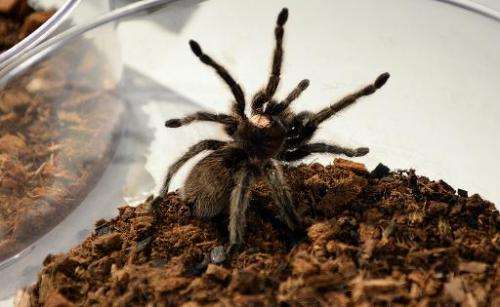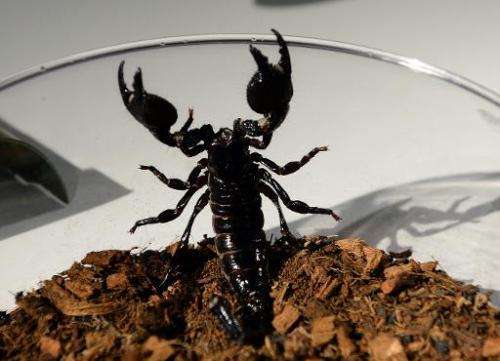Dispel your spider fears in New York on July 4

Terrified of spiders? Then get down and personal with the venomous beasts at one of New York's top museums as it debunks the Hollywood myth that they're dangerous.
Arachnophobia, the excessive fear of spiders, is one of the most common animal phobias—felt by millions of people worldwide.
And yet scientists say eight-legged creatures, tarantulas and scorpions included, pose no threat to humans, keep insects at bay and may even help cure disease.
Twenty species star in the exhibition "Spiders Alive!" at the American Museum of Natural History, which houses the world's largest research collection of spiders.
Visitors can watch demonstrations of live spiders, tarantulas and scorpions, ask questions and have their fears assuaged when the exhibition opens on Independence Day and runs through November 2.
Curator Norman Platnick, a world-renowned arachnologist, encourages all New Yorkers to get up close and personal.
"I think the fears are a learned thing, and it is basically irrational," he told AFP, blaming parents and the media.
"We all have this Hollywood image of a tarantula crawling across James Bond's chest, and we're led to believe that he's in dire peril—and the only thing he's in danger of is itching a little.

"That animal is not going to be able to hurt him in the slightest," laughed Platnick, referring to 1962 spy film "Dr No," in which Sean Connery escapes death by tarantula.
"Spiders Alive!" presents its subjects as—in the words of Platnick—"handsome, fascinating creatures that are extremely beneficial to humans."
A cure for epilepsy?
By killing so many insects, Platnick said spiders have allowed humans to flourish. Without them, human populations would be much smaller, if not non-existent, he said.
Older than dinosaurs, spiders evolved more than 300 million years ago.
On display at the exhibit is a spider trapped in resin 20 million years ago and a limestone fossil from 100 million years ago.
Among the live critters are four Black Widows, a venomous spider endemic in North America that can be found on roadsides and in suburban gardens—famous for occasionally eating males after mating.
But fewer than one percent of more than 43,000 documented species have venom dangerous to people, the museum says.

Nor are spiders biters or confrontational. Platnick said many are too small to penetrate human skin and, even among those that can, their bite will have almost no effect.
Arachnids can also help bring advances in human medicine.
For example, some compounds in spider venom, valuable to neurological research, could provide potential cures for diseases such as epilepsy.
A protein in the Chilean rose tarantula can also help regulate heartbeat, which could be useful in treating heart disease.
"We know, at best, half of what's out there," Platnick told AFP.
"Every morning I can come in and look through my microscope and see something that I've never seen before.
© 2014 AFP



















